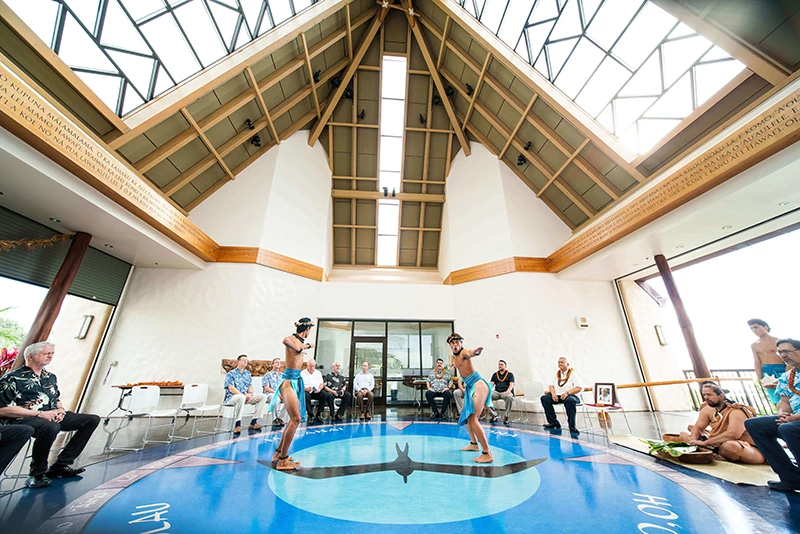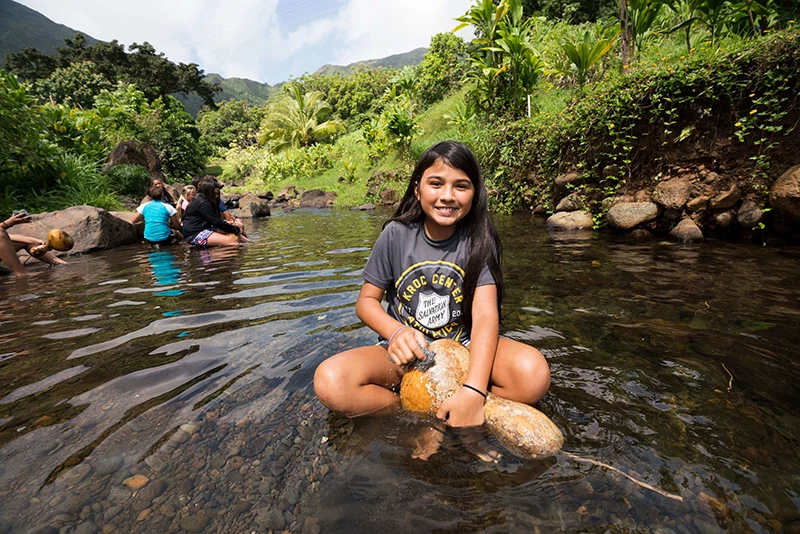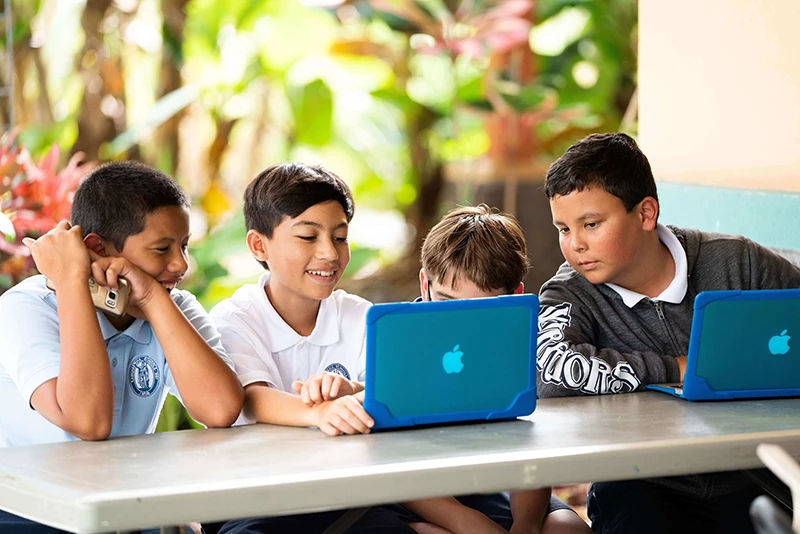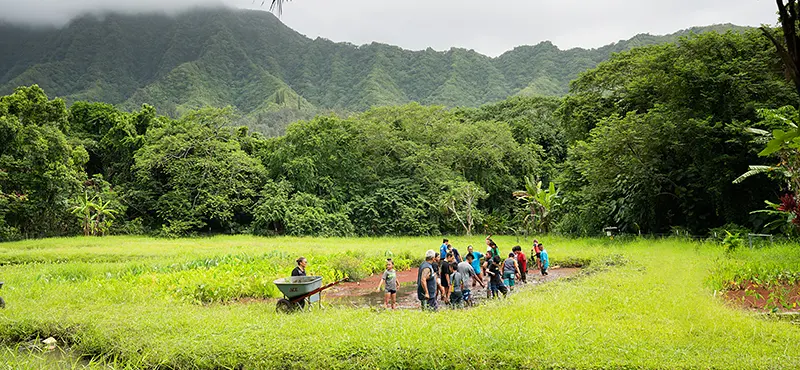For the first time, Hawaiʻi’s history is taking the global spotlight, told in ʻōlelo Hawaiʻi and led by ʻōiwi voices.
“Chief of War,” the new Apple TV+ series created by Jason Momoa and Thomas Paʻa Sibbett, follows the rise of Kamehameha and the unification of the Hawaiian Kingdom. The nine-episode historical epic marks a breakthrough moment for representation not just in the stories being told but in who is telling them and how.
“We only see her [our history] in paintings… So, this is a massive moment,” Momoa said. “We have so many stories to tell that we should be telling. So let this be the first of what should be many.”
Momoa plays Kaʻiana, a complex figure in the history of the Kingdom. He said the series was created with their own people in mind but portraying aliʻi is no small task. Many in the cast approached their roles with deep cultural and spiritual preparation. Kiwi-Tongan actress Luciane Buchanan, who portrays Kaʻahumanu, traveled to Hilo to better understand the legacy into which she was stepping. While visiting a heiau, a bird landed beside her just as a park ranger appeared with a rare book she’d been searching for.
“It was like I was meant to be there,” Buchanan said. “I found my power through playing her. It made me more confident, helped me lead within my cast, and really showed me what it means to serve.”
Hawaiian actor and playwright Moses Goods, who plays Moku, said the kuleana was clear from the start.
“These are not just historical figures. These are kūpuna,” Goods said. “I prepared in any way that I could — spiritually, mentally, doing what I had to do to connect — so that I’m carrying this kuleana in the way they need me to.”
While the sweeping visuals and battle scenes deliver on spectacle, the emotional weight of the series comes from its language and the generations of work that made it possible for ʻōlelo Hawaiʻi to carry a story like this. Behind the scenes, language consultant Kahoʻokahi Kanuha KSK’11 worked to ensure each scene intentionally carried the power of the language.
“ʻAʻahe palena o ka ʻōlelo Hawaiʻi, o nā palena apau, aia me kākou, eā? No laila, kēia aʻe palena ʻana, kēia hoʻākea ʻana i nā palena, um, he lanakila nui kēia. No ka mea, kēia pahuhopu, ʻaʻale ka ʻōlelo Hawaiʻi ma ke kula wale nō, eā? ʻAʻale ka ʻōlelo Hawaiʻi ma ka hale wale nō. Ka hiki ke lawe aku ma nā wahi apau, uh, and ʻaʻale ma nā haʻawina wale nō. Pono hiki ke leʻaleʻa ma ka ʻōlelo Hawaiʻi. Pono hiki ke kaumaha ma ka ʻōlelo Hawaiʻi. Pono hiki ke ʻuwā, a hūhū, ukiuki, uh leʻaleʻa nā mea like ʻole. ʻAʻahe palena o ka ʻōlelo Hawaiʻi, ʻike ʻana kākou i kēia— ma kēia kiʻi ʻoniʻoni.”
[Translation: “There’s no limit to Hawaiian language, if there are limits, they’re ours. So breaking down those boundaries, expanding what’s possible, that’s a huge win. Because the goal isn’t “Hawaiian in school.” It’s not “Hawaiian at home.” It’s Hawaiian everywhere. And not just for lessons/homework. We should be able to have fun in Hawaiian. To grieve in Hawaiian. To yell, to get angry, to laugh, everything in Hawaiian. There’s no limit to Hawaiian language—and we see that here, in this film.”]
At the Oʻahu premiere, the response was immediate as the audience took in the cinematic depiction of their heritage. The hundreds in the crowd roared with awe and recognition at the chance to see, hear and feel something long overdue.
“ʻO akahi nō mākou i ʻike i Ke Aliʻi Kaua, Chief of War, no Apple Kīwī no hoʻi. Just pā ka naʻau i ka lohe ʻana i ka ʻōlelo Hawaiʻi ma kēia ʻano kiʻi ʻoniʻoni no hoʻi. ʻAʻale wā i hala — he wā hou kēia no ka lāhui Hawaiʻi, no ka ʻōlelo Hawaiʻi, no ke kuana o ka moʻolelo Hawaiʻi,” said background actor Kepa Barrett KSK’13.
[Translation: “Upon first seeing Ke Aliʻi Kaua, “Chief of War” on Apple TV — it just hit the gut, it touched our hearts, to hear Hawaiian language in this kind of cinematic production. This isn’t the past—this is a new era for the Hawaiian nation, for the Hawaiian language, for the lens of Hawaiian storytelling.”]
Those reactions are what co-creator Sibbett hoped the series would spark.
“When you talk about representation and language, that’s what the show is for,” Sibbett said. “I can sit with my parents, and we can hear ʻōlelo Hawaiʻi for the first time on screen. This is an opportunity for all of us to gather around to support a movement — and that movement is Hawaiian excellence.”
And for many, “Chief of War” is only the beginning.
To go deeper into the history, language and cultural grounding behind the series, tune in to Kanaeokana’s upcoming podcast with Sibbett. Each episode unpacks the moʻolelo and what it means for the future of Hawaiian storytelling: https://kanaeokana.net/chiefofwar
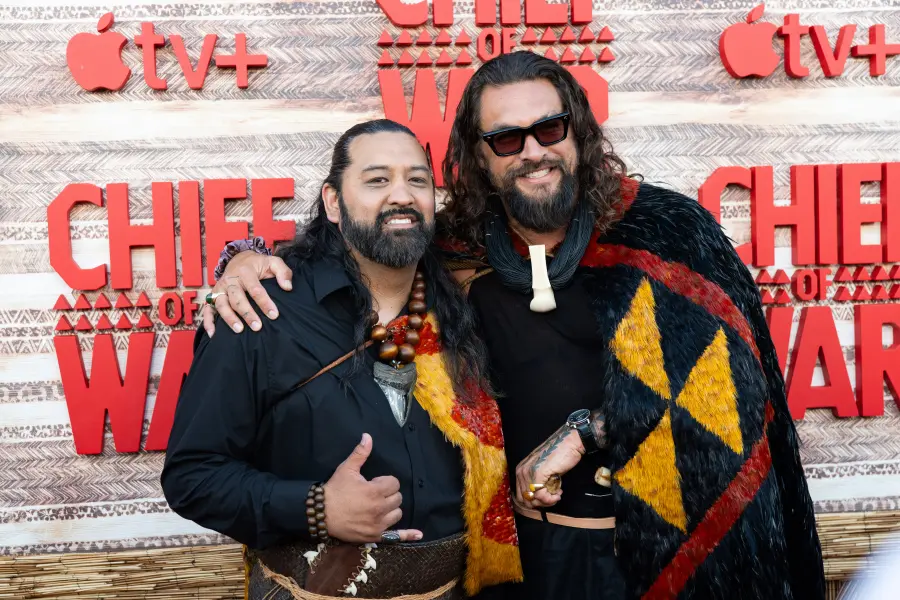
Paʻa Sibbett and Jason Momoa at the Oʻahu premiere of "Chief of War."
Paʻa Sibbett and Jason Momoa at the Oʻahu premiere of "Chief of War."
TAGS
kamehameha schools,
kanaeokana,
bernice pauahi bishop,
king kamehameha,
hawaiian history,
native hawaiian identity,
'ōiwi leadership
CATEGORIES
Kaipuolono Article, Regions, Kaua’i and Ni’ihau, Wai’anae Coast, ‘Ewa, Waialua, Kona, O’ahu, Ko’olau, Maui, Moloka’i and Lana’i, West Hawai’i, East Hawai’i, Themes, Culture, Community, Newsroom, Community Education, Community Events, Department News, Alumni, Kapalama, KS Kaiāulu, Oiwi Leaders
Print with photos
Print text only

